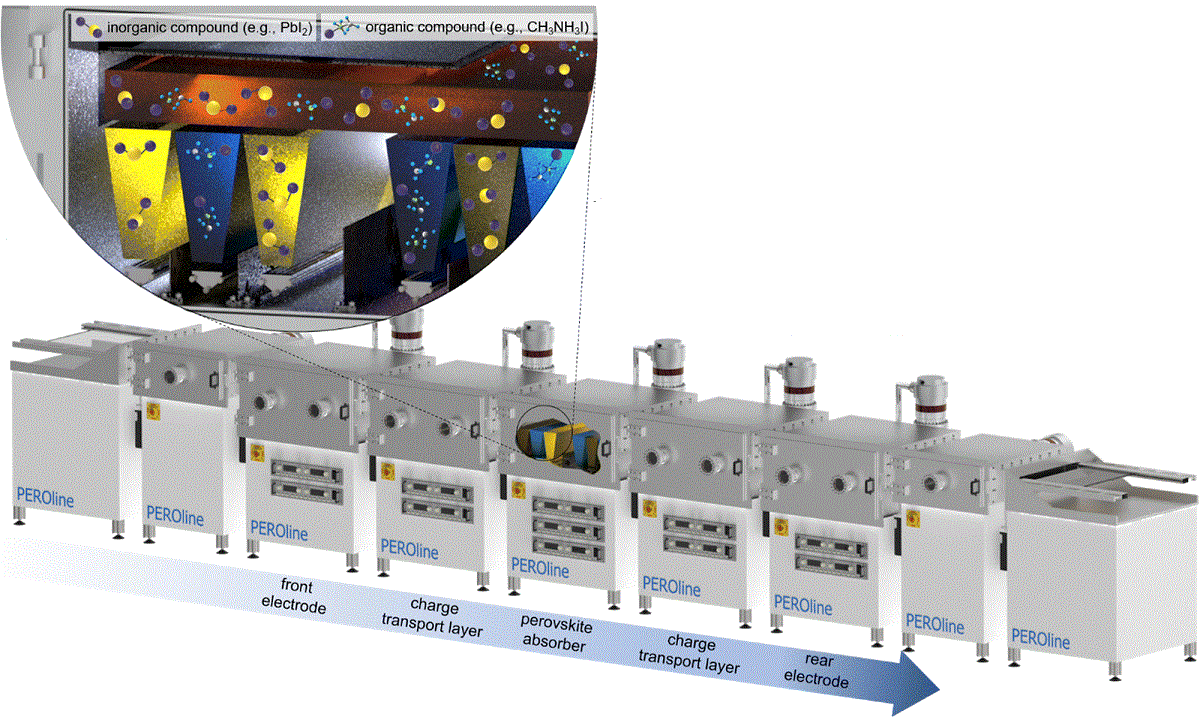Researchers from 21 organizations in 10 countries coordinated by the U.S.-based National Renewable Energy Laboratory (NREL) and Germany's Karlsruhe Institute of Technology (KIT) assessed the prospects of using vapor-based deposition processes to fast-track perovskite solar cell commercialization, drawing attention to its merits and key areas to research and develop.
“To date, sequential vapor-phase processes may offer the highest, however, there are still too slow dynamic deposition rates,” Ulrich W. Paetzold, co-corresponding author and leader of the next-generation PV group at KIT told pv magazine. The hope is that research into new high-rate deposition concepts like closed-space sublimation, flash sublimation, or sputtering approaches, as well as the exploration of industrial designs for evaporation sources could bring the required performance.
In the study “Vapor phase deposition of perovskite photovoltaics: short track to commercialization?,” published in Energy Environmental Science, the group explained that there is a need to put more effort into researching using vapor phase deposition processes to achieve scalable production of perovskite thin films and to move more rapidly towards commercialization.
The paper highlights the competitive advantages and challenges of vapor phase deposition, discusses the most crucial process parameters in a technology assessment, and provides an overview about the companies participating in the emerging global perovskite industry, according to co-corresponding author Tobias Abzieher, former NREL researcher, now at Swift Solar, a U.S.-based perovskite PV startup. It also contains an outlook on the commercialization of the perovskite technology in general.
Notably, there is an analysis of the industrial approaches of 89 companies worldwide working on perovskite products, including module manufacturers, equipment providers, and material suppliers. “To our best knowledge, it is the first published comprehensive overview about industrial activities for perovskite PV,” Abzieher told pv magazine.
The team also reviewed the literature finding that solution processing dominates. However, the research trend contrasts with the team’s study of the 89 commercial manufacturers. For example, the researchers found that 7 out of 15 of the world’s largest solar module manufacturers, including both silicon and cadmium telluride (CdTe) PV manufacturers, are working on perovskite PV, and that 6 of these are using either vapor phase processing or a combination of vapor phase and solution processing.
Furthermore, 40% of the module manufacturers and 70% of the equipment manufacturers in the study are actively developing vapor phase deposition or combinations of vapor phase deposition and solution processing. The team noted “significant interest” in solution-based processing amongst established companies, while it is the dominant process amongst early-stage solar module manufacturers and equipment suppliers.
Strengths and weakness
Vapor phase processing of perovskite thin films has merit due to its track record in high-quality deposition on textured surfaces, the high production yield and reproducibility, as well as the “simple” integration into existing production lines, according to the researchers. It was also noted that champion solar cells made with vapor-based processing reportedly achieved 24.1% power conversion efficiency in the literature, similar to solution processes.
Another point in favor of vapor processing is its track records in both thin-film PV manufacturing and the highly competitive organic light-emitting display (OLED) industry. It could even be cost-competitive, as revealed by the paper’s techno-economic analysis, which states that, for high deposition rates and large-scale manufacturing tools, vapor phase processing can compete with solution processing, provided that key challenges of vapor processing are solved, such as achieving state-of-the-art efficiency and durability performance along with further research efforts into perovskite compositions, charge transport layers, passivation strategies, and device architectures.
Other issues to resolve include the decomposition of organic precursor materials, the development of process and monitoring equipment, and the improvement of deposition throughput which needs to be “at least one to two orders of magnitude” faster, emphasized the researchers who noted the latter as one of the “most important” parameters to optimize.
This content is protected by copyright and may not be reused. If you want to cooperate with us and would like to reuse some of our content, please contact: editors@pv-magazine.com.



By submitting this form you agree to pv magazine using your data for the purposes of publishing your comment.
Your personal data will only be disclosed or otherwise transmitted to third parties for the purposes of spam filtering or if this is necessary for technical maintenance of the website. Any other transfer to third parties will not take place unless this is justified on the basis of applicable data protection regulations or if pv magazine is legally obliged to do so.
You may revoke this consent at any time with effect for the future, in which case your personal data will be deleted immediately. Otherwise, your data will be deleted if pv magazine has processed your request or the purpose of data storage is fulfilled.
Further information on data privacy can be found in our Data Protection Policy.